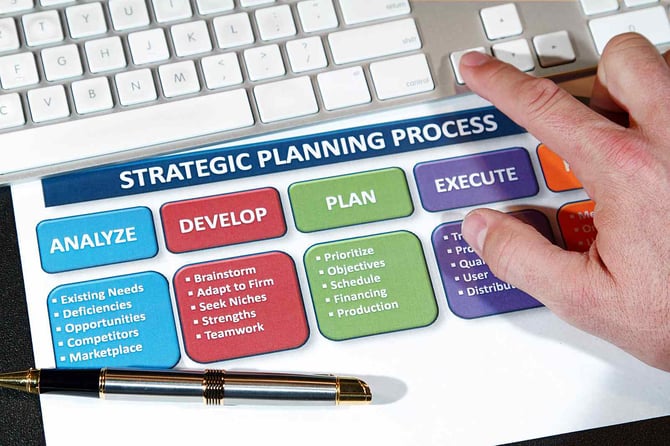At this point, not a lot can be predicted about how businesses will fare in 2021. But one thing’s for sure—innovation, the ability to come up with new products, upgrades, and other breakthroughs, will be critically important. That’s why companies should strive to incorporate the whole idea of advancement into their planning process now.
Forward-thinking companies understand that success grows out of having what the Harvard Business Review calls an “innovation system.” Essentially, this means “a coherent set of interdependent processes and structures that dictates how the company searches for novel problems and solutions, synthesizes ideas into a business concept and product designs, and selects which projects get funded.”
Without a systematic approach, HBR adds, that “induces customers to pay more, saves them money or provides some larger societal benefit … [the plan] is not creating value.”
To maximize eventual success, experts contend that change initiatives should be integrated into a company’s strategic plan. Objectives around innovation should go hand-in-glove with a company’s plan, in order to avoid the dreaded “silo effect” where different departments—lacking a broader context—simply go their own ways.
How can you incorporate innovation into your strategic planning?
Start with a comprehensive knowledge of your customers.
A business that closely follows the ever-changing needs of customers is better-positioned for pushing change efforts than others without that in-depth knowledge. As you undertake planning for 2021 and beyond, it’s essential to focus intensely on what you know about customers preferences. If a gap in knowledge exists, make every effort to close it and pursue goals with the idea of always adding value.
Compile data from internal and external sources.
In addition to knowing your customer base inside and out, it’s a good idea to reach out to other sources for added information to fill out your strategic goals. Consider these action steps:
- Conduct a survey of department managers, soliciting ideas for change.
- Invite vendors to “pitch in” with concepts that drive fundamental change.
- Enlist the support of third-party advisors and other industry experts.
Simply put, the more thoroughly you grasp the market you operate in, the clearer your innovation goals can be articulated in your strategic plan.
Focus on your unique value proposition.
Customer value is the guidepost for your innovation efforts. Look closely at the initiatives you have in mind and determine if they result in “creating value that either saves your customers money and time or makes them willing to pay more for your offering,” notes Viima, an innovative management software firm. Other key objectives include making your product “perform better or [become] more convenient to use,” as well as being “more durable and affordable compared to the previous product” and to similar products on the market.
Carve out time to think more innovation and strategic planning.
Enlisting the efforts of others to weigh in on innovative thinking is great, but it’s likely that no one can match your own, hard-earned knowledge of the industry in which you operate. The key is finding the precious time needed to step away from day-to-day operations and think hard about what you want the future to look like.
One way to achieve this goal is by joining a business advisory board like TAB. The chief purpose of this type of peer leadership group is giving CEOs and business owners the space in which to contemplate what the future holds and then making plans to adapt in ways that accelerate growth.
As we roll into 2021, the familiar mantra is never timelier than now: The only constant is change. To learn more and better prepare yourself for the new year, download our free TAB white paper, “What’s Your Excuse for Not Having a Strategic Plan?”








